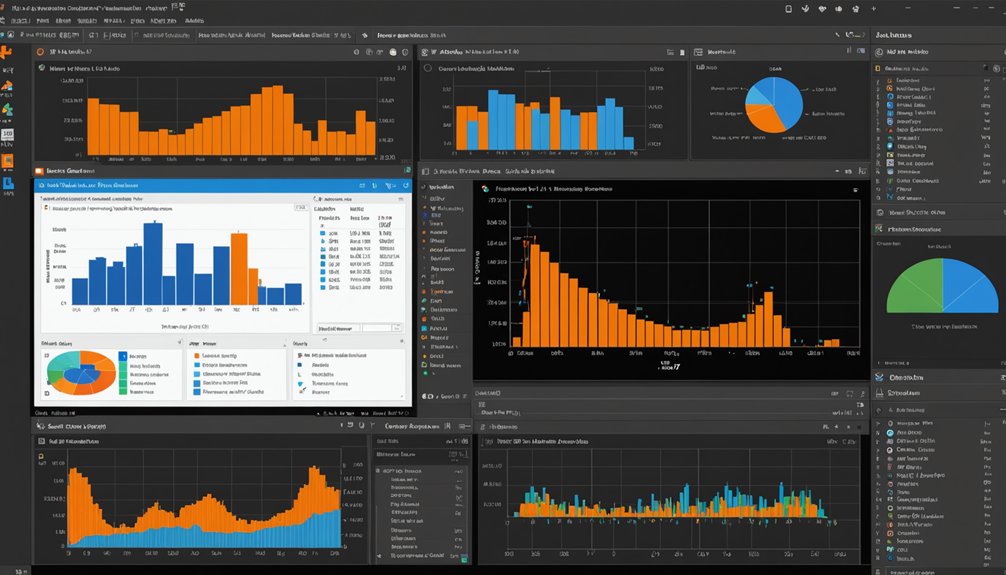Quantum Machine Learning merges quantum physics with AI, using weird phenomena like superposition to process data in ways regular computers can’t. It’s not just fancy tech jargon. QML encodes information into quantum states, using specialized circuits for optimization. Financial firms, healthcare, and logistics companies are already jumping on board. Sure, there are challenges—quantum noise, algorithm development, hardware limitations. But hybrid approaches are showing real promise. The quantum revolution isn’t waiting for permission.

While traditional computing struggles with massive datasets, quantum machine learning emerges as a computational superhero, combining the mind-bending principles of quantum physics with the pattern-recognition powers of machine learning.
It’s not just another tech buzzword. QML leverages quantum phenomena like superposition and entanglement to process information in ways classical computers simply can’t match. Forget your standard bits—qubits exist in multiple states simultaneously, enabling parallel processing that makes traditional computers look like abacuses. Similar to how predictive AI models are revolutionizing climate simulations, QML promises unprecedented computational speed and accuracy.
Quantum computing isn’t hype—it’s computational sorcery that turns impossible problems into tomorrow’s solutions
The mechanics are fascinating. Information gets encoded into quantum states. Variational quantum circuits optimize parameters. Novel algorithms exploit quantum properties. Quantum Tunneling helps optimize loss functions, significantly improving algorithm performance. Cloud-based solutions now provide remote access to quantum architecture without requiring ownership of expensive hardware. And yes, it’s still mostly theoretical. The reality? Most quantum computers remain expensive lab experiments. Noisy. Temperamental. But their potential is undeniable.
QML isn’t just about speed. It’s about possibility. Tasks deemed computationally impossible suddenly become feasible. Financial institutions are eyeing it for portfolio optimization. Healthcare researchers see a path to faster drug discovery. Logistics companies dream of perfect route optimization. The applications stretch across industries like a quantum entanglement experiment gone wild. Advanced algorithms like QAOA are revolutionizing how we approach optimization problems.
The challenges? Massive. Quantum noise corrupts calculations. Building practical quantum algorithms makes rocket science look like kindergarten homework. And good luck integrating these exotic systems with classical infrastructure. It’s like trying to connect a spaceship to a horse-drawn carriage.
Despite these obstacles, progress continues. Researchers develop hybrid approaches combining classical optimization with quantum circuits. They’re finding ways to handle high-dimensional data that would choke traditional systems. And the results, when they work, are impressive.
Frequently Asked Questions
How Long Does It Take to Learn Quantum Machine Learning?
Learning quantum machine learning isn’t a weekend project.
Basics take several weeks to months, while deeper understanding demands 6-12 months of dedicated study.
It’s not just theory—hands-on practice with quantum simulators is essential.
Some folks immerse themselves through online courses, others through academic programs.
Community engagement helps too.
Progress depends on background knowledge in quantum computing and machine learning fundamentals.
Not exactly a TikTok skill you’ll master overnight.
Which Companies Are Currently Using Quantum Machine Learning?
Several tech giants are diving into quantum machine learning. Google Quantum AI leads with their Willow processor, while IBM offers the Quantum Experience platform.
D-Wave Systems focuses on quantum annealing for optimization problems. Rigetti Computing works with superconducting qubit technology.
Beyond tech, industries like healthcare use QML for drug discovery, telecom companies optimize networks, and energy firms predict maintenance needs.
Financial services are slower to adopt but exploring options.
Can Quantum Machine Learning Outperform Classical Approaches Today?
No, quantum machine learning can’t beat classical approaches today. Not even close.
Despite theoretical advantages like quantum parallelism and exponential speed-ups, real-world implementation faces massive hurdles. Error correction remains problematic. Qubit stability? A nightmare. The hype exceeds reality.
Classical AI still dominates – it’s scalable, cost-effective, and actually works. Most quantum “advantages” remain theoretical experiments.
Researchers keep pushing, but practical quantum supremacy in machine learning? Not in 2024.
Do I Need a Physics Background for Quantum Machine Learning?
No, you don’t need a physics PhD to engage in quantum machine learning.
Sure, understanding basics like superposition helps. But here’s the truth: mathematical foundations matter more.
Linear algebra and probability theory? Essential. Physics background? Optional.
Many QML tasks focus on computational advantages, not quantum mechanics depth. Python-based tools and frameworks like Qiskit make entry easier.
Training programs exist specifically for non-physicists. The field’s interdisciplinary anyway – data science skills count too.
What Programming Languages Are Used for Quantum Machine Learning?
Quantum machine learning primarily uses specialized languages.
Microsoft’s Q# handles classical flow control in quantum algorithms. Qiskit, an open-source framework, is widely adopted for QML development. Other options include LIQUi|>, Quipper, and Silq from ETH Zürich.
These languages share key features: hybrid classical-quantum support, quantum parallelism capabilities, and error correction functions. Most follow functional programming paradigms.
Qiskit and Q# lead the pack with strong community support and documentation. Not exactly mainstream JavaScript, are they?




